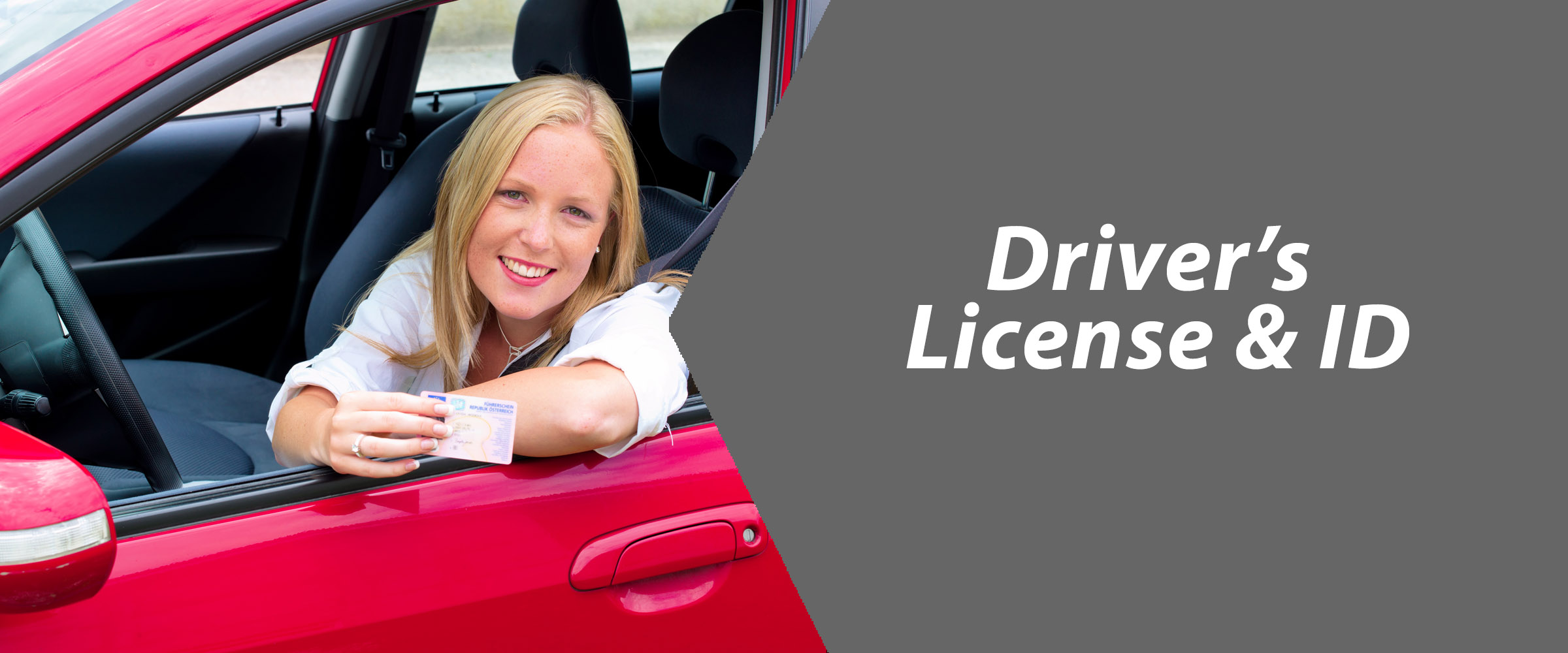Driver’s License & Identification

/ 5 Stars read 4 min
A driver’s license is a required and official document, issued by each state, that permits an individual to operate one or more particular types of motorized vehicles on public roadways, including motorcycles, cars, trucks, and buses. In the United States, driver’s licenses are issued by the state in which you reside. Below, we have provided a list of states where you can find information regarding your driver’s license.
Driver’s License & Identification by State
A driver’s license serves as proof of identity and a permit to drive. To obtain a driver’s license, individuals must pass a written test and a driving test, and meet other state-specific requirements such as minimum age, residency, and vision standards.
Having a driver’s license is a privilege and can be suspended or revoked for certain violations of traffic laws.
How to Get a Driver’s License?
Whether you are a new resident of your state, a first-time driver, or a non-citizen, obtaining a driver’s license is a simple process in most US states. While you may have heard of a learner’s permit because you are over the age of 18, most states will not require you to complete this step of the licensing process. However, you will still need to pass a written and practical road test before receiving your license.
In most cases, adult applicants will be required to complete a few basic steps before they become licensed, including:
- Get ready: Start by making an appointment at your local DMV office, and take time to familiarize yourself with driving laws. Now is also a good time to gather your necessary documents (see below).
- Study for the written test: Most states require passing a written test on traffic laws and safe driving practices. Study the state’s driver’s handbook and take practice tests. You may also opt for online courses that teach you these driving basics.
- Get a Learner’s Permit (if required): In some states, you may need to first obtain a Learner’s Permit, which allows you to practice driving under certain conditions. Also, depending on your state, you may need to graduate your permit into a Provisional License which offers extra responsibility and flexibility with your driving; this is usually held for a short period before you’re allowed to get an adult license.
- Practice driving: Before taking the driving test, it is important to gain experience behind the wheel. You can do this by practicing with a licensed driver, or by enrolling in a driver’s education course.
- Take the driving test: When you feel ready, schedule an appointment to take the driving test. This test will assess your ability to operate a motor vehicle safely and follow traffic laws.
- Obtain a driver’s license: If you pass the driving test, you will be issued a driver’s license after paying the appropriate fee. In some states, you may need to take a road sign recognition test as well.
If you have previously carried a learner license, you may not be required to take the written test. But a practical driving test may still be needed.
What are Different Classes of Drivers License?
When you hear the term “driver’s license,” you probably think of the license required to operate a standard passenger car. While this is indeed the most prevalent type of license, it’s not the only one. If you’ve ever wondered about the various classes of driver’s licenses, let’s delve into it and find out.
Standard Driver’s License
The Class D license is the most common type of driver’s license that people use for driving their vehicles on a daily basis. This license permits drivers to operate vehicles weighing under 26,000 pounds, which includes most passenger cars. Additionally, it also permits drivers to tow smaller trailers or recreational vehicles that weigh under 10,000 pounds.
Commercial Driver’s License
To operate large trucks and commercial vehicles, drivers are required to have a commercial driver’s license (CDL). Compared to a Class D license, obtaining a CDL requires meeting more stringent requirements. Applicants must pass rigorous skills tests and demonstrate detailed knowledge of various vehicle systems. Renewing a CDL may require additional physical assessments beyond the standard eye exam, and CDLs must be renewed more frequently than a standard license. There are three main types of CDLs.
| Class A | A Class A CDL permits drivers to operate vehicles weighing 26,001 pounds or more and tow over 10,000 pounds, encompassing big-rig 18-wheelers and livestock carriers. Additionally, Class A CDL holders often have the privilege of operating various Class B and Class C vehicles with the appropriate endorsements. |
| Class B | Class B CDLs allow drivers to operate single vehicles weighing over 26,000 pounds, including city buses, dump trucks, and box trucks. They also permit drivers to run some Class C vehicles with appropriate endorsements. |
| Class C | Class C CDLs enable drivers to operate vehicles carrying hazardous materials or carrying 15 or more passengers, including some buses and hazmat vehicles. |
How to Check the Status of Your Driving License?
A driver’s license is a state-issued government identification. To check your driver’s license, you will need to access your state’s Department of Motor Vehicles (DMV) website or visit a physical DMV location. Depending on the state, there may be an online feature to check your license status simply by entering your driver’s license number and personal information.
At a physical DMV location, you can typically request a printed copy of your driving record, which will include details about your license status, any traffic violations or accidents, and other relevant information.
Having a current and valid driver’s license is important, so checking your status periodically can help ensure that you are able to legally drive and avoid any penalties or fees for expired or suspended licenses.
Before Your Driver License (Adult) Appointment
Before you head to the DMV for your written and driving test, you will need to bring a few essential items along with you, including:
- A completed driver’s license application form
- Proof of identity (birth certificate, identification card, passport, social security card, etc.)
- Funds to pay for any fees
- Proof of residency (mortgage bill, utility bills, rental or lease agreement that a landlord signs, etc.)
- Proof of vehicle registration and current auto insurance coverage
Moving to a New State
If you have recently moved to a new state, keep in mind that each state has specific requirements for new residents. These can include the time frame in which you must obtain a new state driver’s license, written and road testing requirements, and so on.
If you want to make sure that you pass your written test on the first try, be aware that online practice testing is available. Additionally, all of the information you need to give your road test should be available online or at your local DMV.



